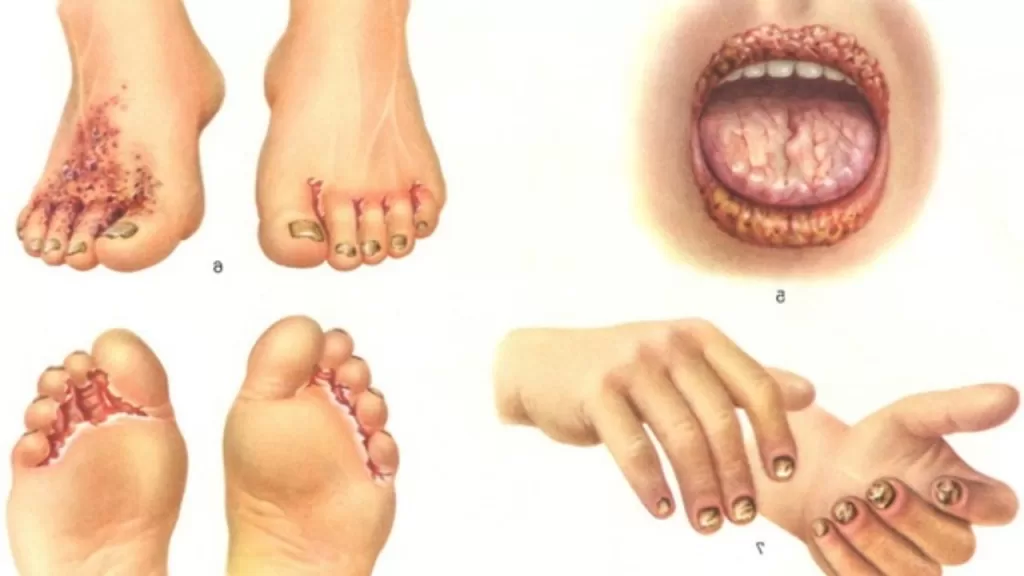Candidiasis is a fungal infection that is caused by yeast known as candida. Therefore, it is also known as yeast infection. Ablicans is the most common type of candida. However, candida is a normal flora of the skin, in the mouth, throat, and vagina. It only causes infection when its growth is out of control.
Types.
Genital candidiasis
It occurs when there is an overgrowth of yeast in the vagina. Occurs when the balance in the vagina changes. However, it is more common in women than men. It can be transmitted through sex. These changes can be caused by:
a. Pregnancy.
b. Diabetes.
c. Wearing wet or poorly dried undergarments.
d. Weak immune system.
e. Some medications e.g antibiotics and birth control.
- Ranjita Chakravarty Age, Husband, Children, net worth.
- Central Cee bio-age, family, edu, songs, net worth.
- Lou Retton age, family, children, husband, career, net worth.
- Jason Aldean bio-age, wife, children, record label, music, net worth.
- Woody Woodriffe Bio-age, Family, Children, wife, net worth.
- Jennifer Baileys Bio-Age, Edu, Children, Wife, Net Worth.
- Nick Cannon bio-age, education, career, wife, and net worth.
f . Use of some vaginal sprays and lubricants.
Signs
- So, a creamy-like discharge that is whitish-yellowish is observed.
- Burning sensation while passing urine.
- Discomfort during intercourse.
- Redness and swelling of the vagina and vulva.
- Itchiness of the vagina.
- Males with yeast infection may experience an itchy rash on the penis.
Treatment
Anti-fungal suppository tablet or cream.
Prevented by:
- Avoid overusing vaginal lubricants.
- proper drying of undergarments.
- Use of condoms to prevent sexual transmission.
- Regular intake of a product like yogurt helps control yeast infection.
2. Thrush candidiasis
– it affects the throat, mouth, and esophagus causing oral thrush. Common in;
- Newborn.
- The elderly.
- Those with weak immune systems especially HIV-positive individuals a common infection.
- Those under medication like antibiotics.
- Diabetic.
Signs.
- Whitish or yellow patches on the tongue, lips, gums, and inner cheeks.
- Redness in the mouth and the throat.
- Pain when swallowing.

Treatment
- Maintaining good oral hygiene.
- Use of mouthwash.
- Use of anti-fungal medicines e.g nystatin and fluconazole.
3. Diaper rash
It is caused by the prolonged use of wet or soiled diapers. It makes the baby’s bottom red and sensitive.
Treated by use of anti-fungal cream.
Prevented by keeping the baby’s bottom clean and dry.
4. Invasive candidiasis
However, this type occurs when yeast enters the bloodstream, it can travel to the heart, brain, and eyes. It can be through medical equipment and can cause a serious life-threatening infection if not treated. This can occur to;
- People who had recently been admitted.
- People with kidney failure.
- Those on antibiotics.
- Weak immune system.
Symptoms -Fever and chills.
Treatment- Oral or intravenous dose of anti-fungal medication.
5. Cutaneous candidiasis
This affects the nails and skin areas that are exposed to moisture for a long period of time.
Symptoms – Red rash. Commonly affected areas are; skin between the fingers and toes, fingernails, groins, and toenails.
Treatment – Application of anti-fungal on the affected areas.
Keeping the skin dry.
- Public Universities in Kenya
- A list of special secondary schools, and contacts.
- Mount Kenya University history, fees, courses
- What is the history of Kenyatta University?
- Best Public High Schools in Kiambu County.
- Kenya Medical Training College, courses, requirements.
- List of best private primary schools in Kirinyaga County.